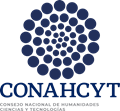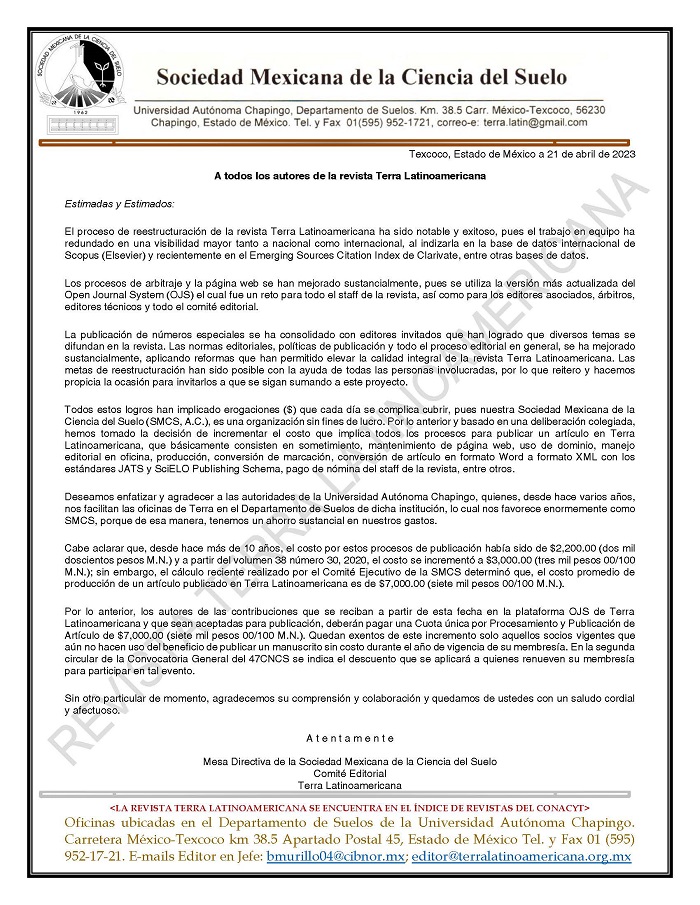Use of a bio-fertilizer on male-sterile and fertile maize hybrids for the High Valleys of Mexico1
DOI:
https://doi.org/10.28940/terra.v35i1.242Keywords:
seed production, mycorrhiza, improved varieties, Glomus intraradices, Zea maysAbstract
The use of improved maize varieties and biofertilizers made with mycorrhizal fungi favor nutrition and complement the use of chemical fertilizers to increase production. The objective of this study was to determine the effect of application of mycorrhiza (Glomus intraradices) on grain yield of f ive maize hybrids in their fertile and male sterility versions and compared with an untreated control. The evaluation was carried out in four experiments: two located in the Facultad de Educación Superior, FES Cuautitlán-UNAM, and two in the Experimental Stations of the Valley of Mexico CEVAMEX-INIFAP, in Texcoco, Mexico. The objective was to study the effect of the biofertilizer on grain yield of hybrids. A complete randomized block design with four replicates was used; the experiments were planted in the second half of May and f irst half of June 2012. Statistical analysis of the data was factorial, where the main factors were environments, genotypes, male sterility / fertility, application or not of biofertilizer, as well as interactions. For grain yield, signif icances were detected for environments and for genotypes, but not for any other factor or interaction. The overall mean grain yield was 8294 kg ha-1. The yield obtained from the crop planted on the second planting date at FES Cuautitlán-UNAM was 9939 kg ha-1, which was higher than that of the crop planted on the f irst date at CEVAMEX (6071 kg ha-1). There was no effect of mycorrhiza application on the average yield of the hybrids (8310 kg ha-1), which was similar to the control without mycorrhiza (8279 kg ha‑1). The highest yielding genotype was Tsíri PUMA, with 9557 kg ha‑1, which was statistically different from H-47 AE (8692 kg ha-1). Tsíri PUMA I yielded 8687 kg ha-1 and PUMA 1183 AE 8150 kg ha‑1. Average yield of the male-sterility version of the hybrids was 8447 kg ha‑1, which was statistically similar to the average of the fertile version (8142 kg ha‑1). Although application of mycorrhiza to seed did not have a signif icant effect on the average yield of the genotypes, it is recommendable to verify this result in fertile and male-sterile maize in subsequent seasons, managing different sowing dates, so that the effect of Glomus intraradices can be expressed and could provide more information on the response to this biofertilizer.Downloads
Publication Facts
Reviewer profiles N/A
Author statements
- Academic society
- Terra Latinoamericana
- Publisher
- Mexican Society of Soil Science, C.A.

















